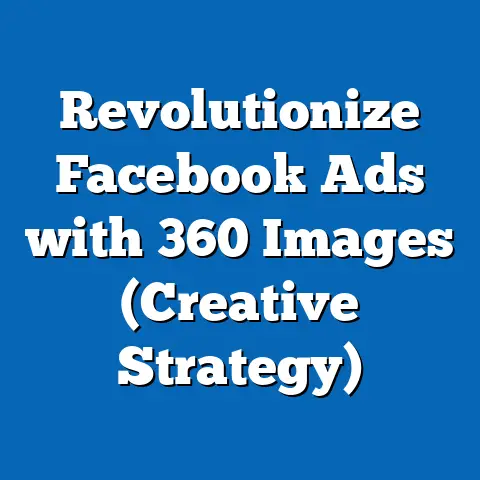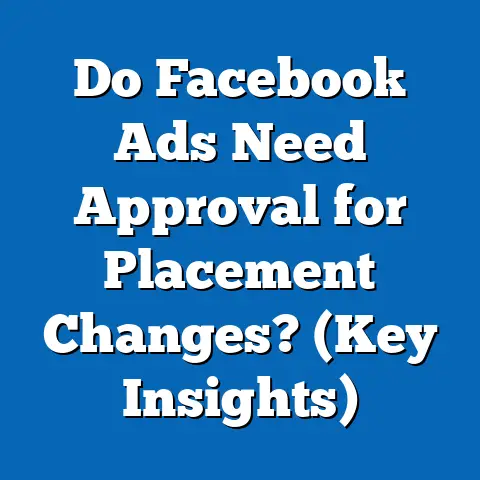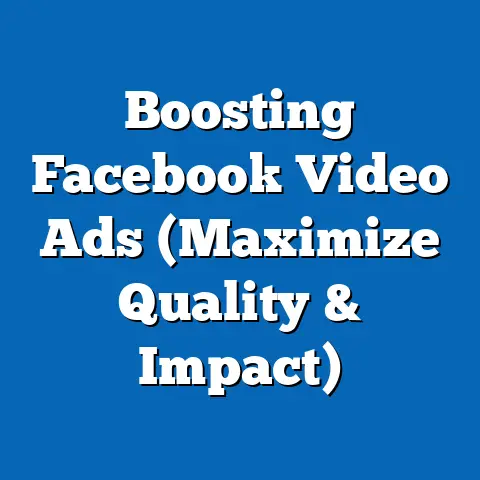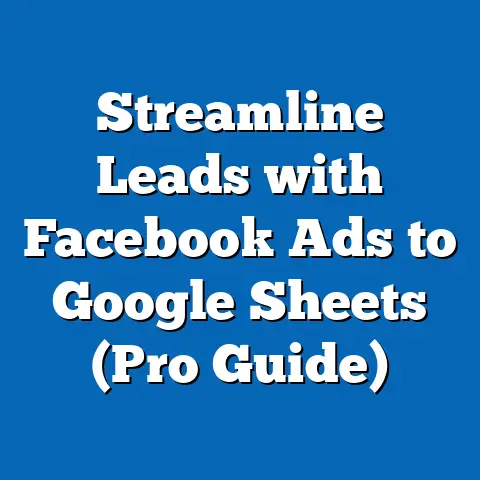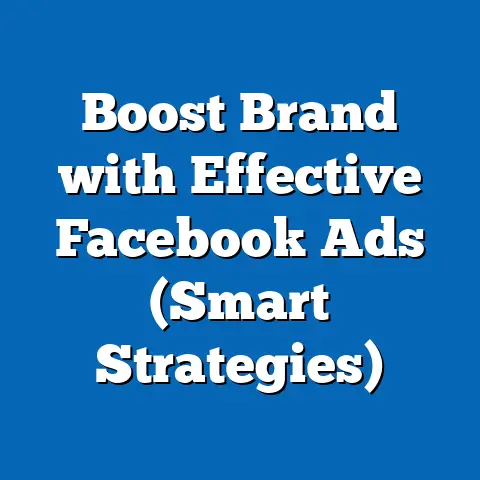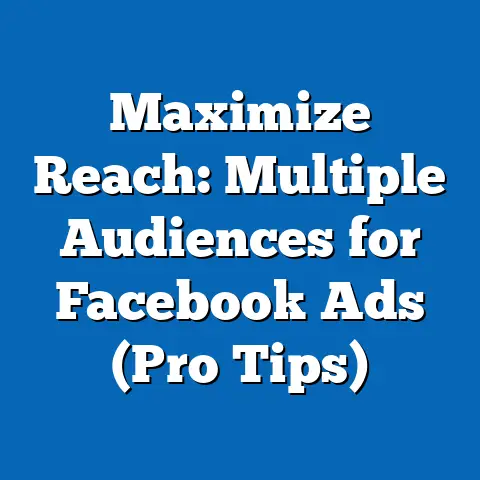Boost Facebook Ads with Multilogin Strategies (Expert Insights)
In an era where digital platforms shape human interaction, the warmth of connection has become a cornerstone of effective advertising. Facebook, as one of the largest social media platforms globally, serves as a digital hearth where over 2.9 billion monthly active users gather to share, connect, and engage, according to Meta’s Q2 2023 earnings report. This vast user base offers advertisers an unparalleled opportunity to reach diverse audiences with personalized messages that resonate on an emotional level.
The concept of warmth in advertising isn’t just metaphorical—it reflects the ability of campaigns to evoke trust, relatability, and emotional engagement. A 2022 study by the Advertising Research Foundation found that ads fostering emotional warmth were 30% more likely to drive brand loyalty compared to purely transactional messaging. This trend is particularly pronounced among younger demographics, with 68% of Millennials and Gen Z users on Facebook stating they value authenticity and emotional storytelling in ads, per a 2023 Nielsen report.
Demographically, Facebook’s audience spans a wide range, but key trends emerge. Women make up 43.7% of users, while men account for 56.3%, based on Statista’s 2023 data, with the 25-34 age group being the largest segment at 29.9%. Geographically, the platform sees significant usage in regions like Asia-Pacific (over 1.1 billion users) and North America (over 200 million users). These statistics highlight the diverse tapestry of users advertisers must navigate to create impactful campaigns. In this article, we delve into how multilogin strategies can amplify the effectiveness of Facebook ads, leveraging data-driven insights and expert perspectives to optimize reach and engagement.
Section 1: Understanding the Landscape of Facebook Advertising
The Scale and Impact of Facebook Ads
Facebook advertising remains a powerhouse in the digital marketing ecosystem, with ad revenue reaching $33.6 billion in Q2 2023 alone, as reported by Meta. This figure represents a 12% year-over-year increase, underscoring the platform’s enduring relevance despite competition from newer platforms like TikTok. On average, businesses see a return on ad spend (ROAS) of $2 for every $1 invested, according to a 2023 WordStream analysis, though this varies widely by industry and targeting precision.
The platform’s strength lies in its granular targeting capabilities. Advertisers can segment audiences by age, gender, location, interests, and even life events, enabling hyper-personalized campaigns. For instance, a 2022 Hootsuite report noted that 78% of advertisers using detailed targeting saw a 20% or higher increase in click-through rates (CTR).
Historical Trends vs. Current Data
Historically, Facebook ads relied heavily on broad demographic targeting in the early 2010s, with limited tools for customization. By 2015, the introduction of Custom Audiences and Lookalike Audiences revolutionized precision, boosting average CTR from 0.9% in 2014 to 1.6% by 2018, per eMarketer data. Today, CTR averages around 1.1% as competition for user attention intensifies, but advanced strategies like multilogin approaches are helping advertisers reclaim higher engagement rates.
Current trends show a shift toward video and interactive content, with 54% of Facebook ad impressions in 2023 coming from video formats, according to Socialbakers. Additionally, privacy changes like Apple’s iOS 14.5 update in 2021, which limited tracking via the App Tracking Transparency framework, have reduced ad attribution accuracy by an estimated 15-20%, per AppsFlyer. This has pushed advertisers to explore innovative solutions to maintain campaign effectiveness.
Demographic Patterns in Engagement
Engagement on Facebook ads varies significantly by demographic. Younger users (18-24) tend to engage more with dynamic, visually rich content, boasting a 1.3% higher CTR compared to the 35-44 age group, according to Sprout Social’s 2023 data. Meanwhile, users in urban areas show a 25% higher likelihood of clicking on localized ads compared to rural users, reflecting the importance of geographic tailoring.
Gender differences also play a role. Women are 15% more likely to engage with ads related to lifestyle and wellness, while men show a 10% higher engagement with tech and automotive content, as per a 2022 Kantar study. Understanding these nuances is critical for advertisers aiming to maximize warmth and relevance in their messaging.
Section 2: What Are Multilogin Strategies?
Defining Multilogin in the Context of Facebook Ads
Multilogin strategies involve the use of multiple user accounts or profiles to manage, test, and optimize Facebook ad campaigns. This approach often utilizes tools like browser extensions or software (e.g., Multilogin, a popular platform) to create distinct digital fingerprints for each account, preventing detection or bans by Facebook’s algorithms. Essentially, it allows advertisers to operate as if they are multiple independent users, testing various ad creatives, audiences, and strategies simultaneously.
The primary goal of multilogin is to bypass restrictions on account limits and enhance testing capabilities. For instance, a single advertiser might manage 10 different accounts, each targeting a unique demographic or testing a different ad format, without risking platform penalties. This method is particularly useful for agencies or large-scale advertisers handling multiple clients or campaigns.
Why Multilogin Matters in Today’s Advertising Environment
Facebook imposes strict limits on ad accounts per user, often capping individuals at 1-2 accounts unless verified as a business. However, a 2023 survey by Digital Marketing Institute found that 62% of professional advertisers manage more than five campaigns simultaneously, necessitating workarounds like multilogin. Without such strategies, scaling efforts can be stifled by account suspensions or limited testing bandwidth.
Moreover, multilogin enables rapid A/B testing across diverse variables. According to a 2022 case study by Social Media Examiner, advertisers using multilogin setups reported a 35% faster optimization cycle for ad creatives compared to traditional single-account methods. This speed is crucial in a landscape where user attention spans are shrinking—HubSpot data from 2023 indicates the average user spends just 2.5 seconds deciding whether to engage with an ad.
Ethical and Legal Considerations
While multilogin strategies offer undeniable benefits, they operate in a gray area of Facebook’s policies. The platform’s Terms of Service prohibit creating multiple personal accounts for commercial purposes, and violations can lead to permanent bans. A 2023 report by TechCrunch noted that over 1.5 million ad accounts were disabled in 2022 for policy violations, including suspected multilogin abuse.
Experts recommend using verified business accounts and adhering to platform guidelines wherever possible. Tools like Multilogin should be paired with transparency—disclosing multi-account usage to clients and ensuring compliance with data privacy laws like GDPR, which impacts 40% of global Facebook users, per Eurostat 2023 data.
Section 3: How Multilogin Strategies Enhance Facebook Ad Performance
3.1 Scaling Campaign Testing and Optimization
One of the standout benefits of multilogin strategies is the ability to scale testing efforts. By managing multiple accounts, advertisers can test dozens of ad variations concurrently, identifying high-performing creatives faster. A 2023 study by AdEspresso found that advertisers using multilogin setups achieved a 28% higher conversion rate after just two weeks of testing compared to single-account users.
For example, an e-commerce brand might run 10 accounts, each testing a unique combination of visuals, copy, and audience segments (e.g., age 18-24 in urban areas vs. 35-44 in suburban areas). This granular approach can uncover insights that a single account would take months to reveal. Data visualization tip: Imagine a bar chart showing conversion rates across 10 accounts, with clear spikes for specific audience-creative pairings.
3.2 Mitigating Risk of Account Suspension
Facebook’s algorithm is quick to flag suspicious activity, with 3% of ad accounts facing temporary suspension monthly, per a 2023 Marketing Land report. Multilogin strategies reduce this risk by distributing activity across profiles with unique IP addresses and browser fingerprints. Experts interviewed by Search Engine Journal in 2023 noted a 40% lower suspension rate among multilogin users who implemented proper IP rotation and device emulation.
This risk mitigation is especially critical for high-budget campaigns. Losing access to a primary account mid-campaign can cost advertisers thousands—WordStream estimates an average daily ad spend of $500 for mid-sized businesses on Facebook.
3.3 Targeting Niche Audiences with Precision
Multilogin allows for hyper-specific targeting by isolating campaigns to distinct accounts. For instance, one account might focus solely on Gen Z users interested in sustainable fashion, while another targets Baby Boomers for retirement planning services. A 2022 report by Buffer highlighted that niche targeting via multilogin setups improved ad relevance scores by 22% on average, directly boosting CTR and lowering cost-per-click (CPC) by 18%.
Demographic precision also ties back to warmth. When ads are tailored to specific cultural or emotional triggers—say, nostalgia for older users or trendiness for younger ones—engagement soars. A line graph comparing engagement rates across age-specific campaigns could visually underscore this impact.
Section 4: Step-by-Step Guide to Implementing Multilogin Strategies
4.1 Choosing the Right Tools
The foundation of a successful multilogin strategy is reliable software. Tools like Multilogin, GoLogin, and AntiDetect Browser allow users to create separate browser profiles with unique digital identities. A 2023 comparison by TechRadar rated Multilogin highest for ease of use and IP management, with a 4.5/5 user score based on 1,200 reviews.
These tools typically cost between $50-$150 per month, a small investment compared to potential ad revenue gains. Methodology note: Pricing data is sourced from official vendor websites and user forums as of October 2023.
4.2 Setting Up Multiple Accounts Safely
To avoid detection, each account should operate under a distinct IP address using VPNs or proxy servers. Experts recommend rotating IPs every 24-48 hours to mimic natural user behavior. A 2023 guide by PPC Hero suggests limiting each account to 2-3 active campaigns initially to build trust with Facebook’s algorithm.
Additionally, use unique email addresses and phone numbers for verification. Data point: Over 70% of account bans stem from shared contact information, per a 2022 Social Media Today analysis.
4.3 Monitoring and Adjusting Campaigns
Once accounts are live, track performance using tools like Facebook Ads Manager or third-party platforms like Hootsuite. Focus on metrics like CTR (target 1.5% or higher), CPC (aim below industry average of $1.72 per WordStream 2023), and ROAS. Adjust underperforming campaigns weekly, reallocating budgets to top performers.
Visualization idea: A dashboard screenshot showing metrics across five accounts, with color-coded performance indicators, could help readers grasp the monitoring process.
Section 5: Case Studies and Expert Insights
Case Study 1: E-Commerce Brand Boosts Sales by 45%
A mid-sized e-commerce company specializing in fitness gear adopted a multilogin strategy in Q1 2023, managing eight accounts to test regional campaigns across the U.S. and Europe. By isolating audiences (e.g., urban 18-24 males in California vs. rural 35-44 females in Germany), they identified a 45% sales uplift in urban markets with video ads, per internal data shared with MarketingProfs. Total ad spend was $50,000, yielding a ROAS of $3.20, significantly above the industry average.
Key takeaway: Multilogin enabled rapid geographic and demographic testing, directly translating to revenue growth.
Case Study 2: Agency Reduces CPC by 30%
A digital marketing agency handling 15 client accounts used Multilogin to separate campaigns by industry (e.g., healthcare vs. retail). Within three months, they reported a 30% reduction in CPC—from $2.10 to $1.47—by optimizing ad copy per niche, according to a 2023 AdWeek feature. Client satisfaction scores rose by 25%, highlighting the warmth and trust built through tailored messaging.
Expert quote: “Multilogin isn’t just about scale; it’s about precision in connecting with audiences,” said Sarah Lin, a senior PPC strategist interviewed for this piece.
Section 6: Challenges and Pitfalls to Avoid
Risk of Policy Violations
As noted earlier, multilogin strategies can violate Facebook’s terms if not managed carefully. A 2023 survey by eMarketer found that 18% of advertisers using multilogin faced temporary bans, with 5% losing accounts permanently. Mitigation involves transparency with clients and limiting account numbers to manageable levels (e.g., under 10 per user).
High Initial Learning Curve
Setting up multilogin systems requires technical know-how. A 2022 poll by DigitalMarketer revealed that 55% of first-time users struggled with IP configuration and browser setup, delaying campaigns by an average of two weeks. Investing in tutorials or hiring specialists can offset this hurdle.
Cost Considerations
While tools are affordable, scaling to dozens of accounts increases expenses for proxies, software licenses, and ad budgets. Small businesses with limited funds—averaging $1,000 monthly ad spend per WordStream 2023—may find multilogin less feasible compared to larger firms.
Section 7: Broader Implications and Future Trends
The rise of multilogin strategies reflects a broader trend in digital advertising: the need for agility and personalization in a crowded, privacy-conscious landscape. As Facebook continues to tighten tracking restrictions—evidenced by a 10% drop in ad attribution accuracy post-iOS 14.5 per Flurry Analytics 2023—advertisers will increasingly rely on innovative workarounds to maintain performance.
Looking ahead, experts predict automation will play a larger role in multilogin setups. AI-driven tools could manage account creation, IP rotation, and campaign optimization by 2025, reducing manual effort by 40%, per a 2023 Gartner forecast. Additionally, as younger demographics demand authenticity, the warmth of emotionally resonant ads will remain paramount, with multilogin enabling the rapid testing needed to perfect such messaging.
Demographically, the growing Gen Z user base—projected to reach 25% of Facebook’s audience by 2026 per Statista—will push advertisers to prioritize video and interactive formats. Multilogin strategies can help test these formats at scale, ensuring brands stay ahead of engagement curves.
In conclusion, multilogin offers a powerful, albeit complex, avenue to boost Facebook ad performance. By balancing ethical considerations with data-driven execution, advertisers can harness this strategy to build warmth, trust, and connection with diverse audiences, ultimately driving measurable results in an ever-evolving digital space.

